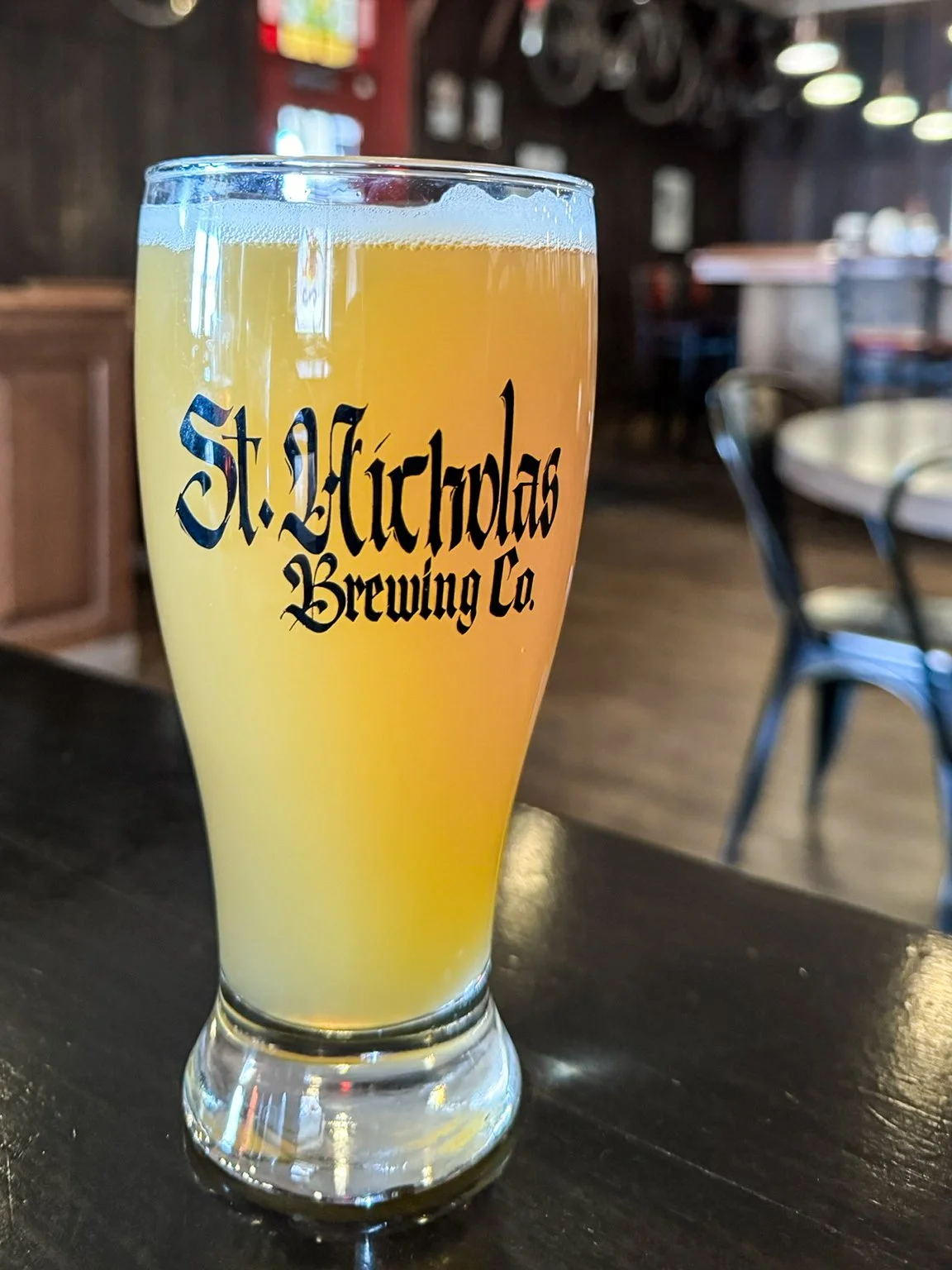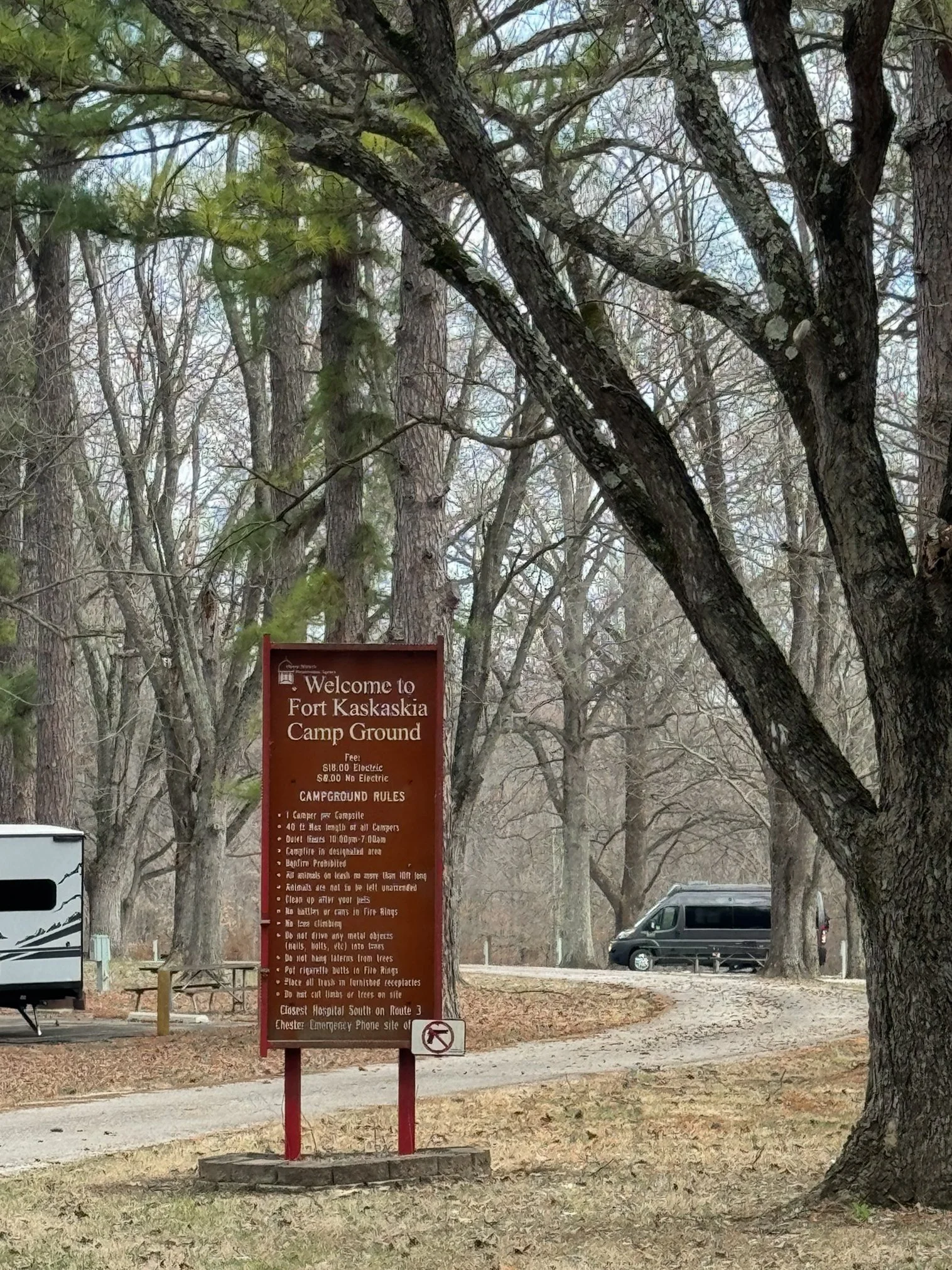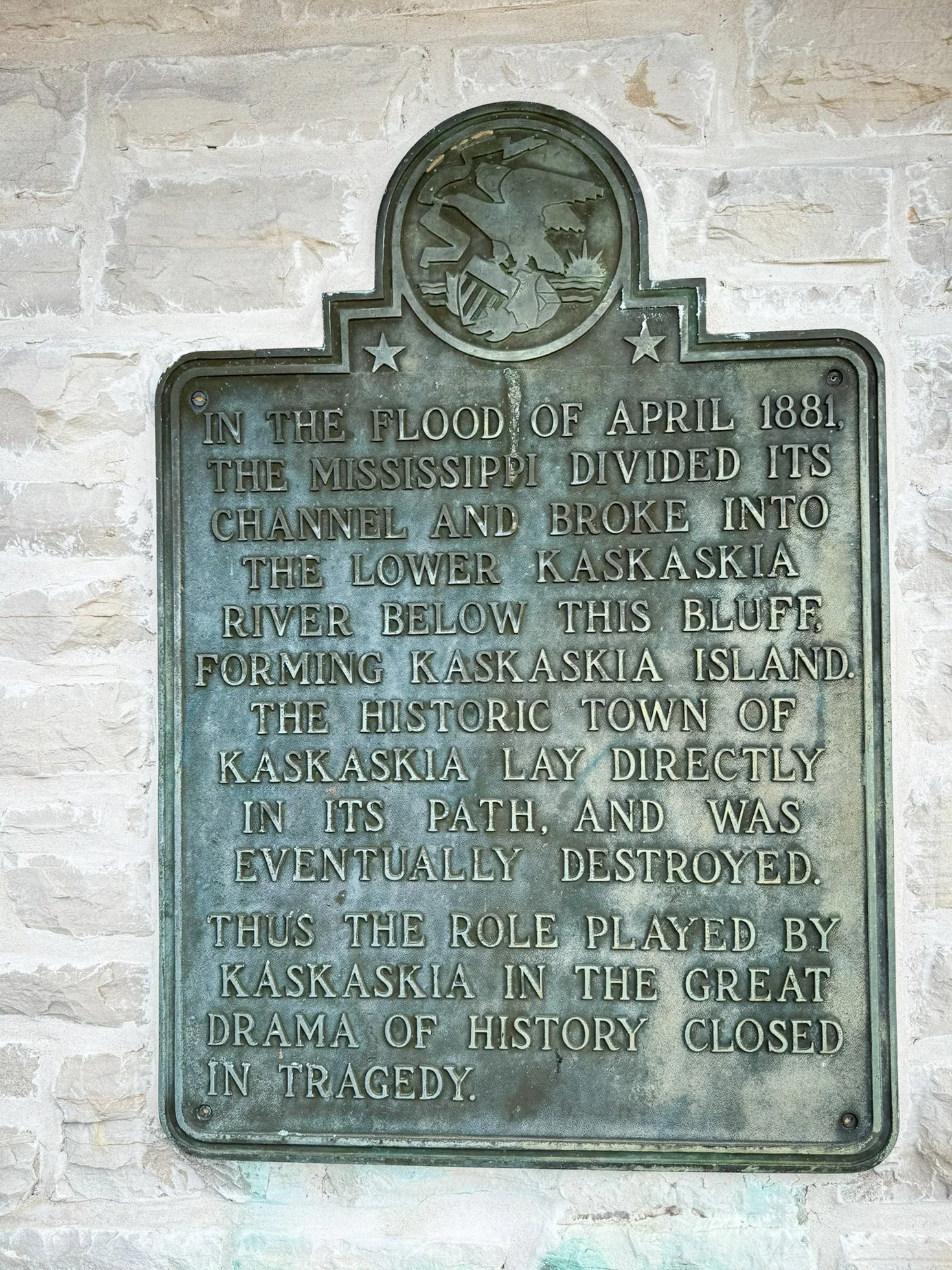Go, do, play, stay — Chester and Fort Kaskaskia in Southern Illinois
As you drive south on Lehmen Drive / Illinois Route 3 into Chester, you’ll come across this sign celebrating Popeye.
Southern Illinois has plenty of places, from small towns to natural wonders to wineries, to explore. We first shared a few of them in our 2023 blog, 3 moments of delight in Southern Illinois.
Recently, we went back to take a closer look at one of those delightful places: the town of Chester. Here’s our insights and recommendations for visiting Chester, Illinois, and nearby Fort Kaskaskia.
Go
Chester, Illinois
Along the Mississippi River
Chester, Illinois, is a small town with a long history and a lot of character — err, characters. It’s the hometown of Elzie Crisler Segar, the artist who created Popeye the Sailor Man in 1929.
Today, statues of the Popeye characters dot the town.
But, let’s go back 100+ years before Popeye’s inception, to when Chester was founded in 1816.
Illinois was not yet a state, just a U.S. territory. And, the area was the western frontier of the young country.
Steamboats carried people and goods up and down the Mississippi River. With its flour mill, lodging, castor oil production, ferry and more, Chester was a happening stop along this superhighway of the time.
Of course, people settled here long before Chester was officially on the map. That includes Indigenous Peoples and later the French (in the 1600s) and British (in the 1800s).
Today, there are no steamboats, and there isn’t much hustle and bustle at the river landing. But, you can still spend the day in Chester seeing a few sights and enjoying a nosh.
Do
St. Nicholas Landmark
Brunch, lunch, dinner, beer
St. Nicholas Landmark, at 111 Ferry Street in Chester, is open Wednesday to Sunday.
A hazy IPA by St. Nicholas Brewing Co. delivers the hops.
2025 update: St. Nicholas Landmark is temporarily closed, but it’s still worth a stop for views of the Mississippi River and the Toar statue.
Situated next to the railroad tracks that run alongside the Mississippi River, this taproom is one of three locations of St. Nicholas Brewing Co.
Their flagship location is in the historic St. Nicholas Hotel in Du Quoin, Illinois, about an hour east of Chester. They also have a taproom at the Southern Illinois Airport in Murphysboro, about 50 minutes east of Chester.
All locations serve food, as well as pints of their ales, IPAs, porters and more.
The Chester taproom’s historic building dates back to the early 1800s.
Its various incarnations over the years have included a buggy shop and a candy store. Local lore says that Mark Twain and Charles Dickens once visited.
Today, cyclists, beer enthusiasts and families flock to the gathering spot to share a meal and a pint while watching the Mississippi River roll by. As well as for events such as Oktoberfest.
Play
Popeye & Friends Trail
19 statues placed throughout town
The Toar statue is in the parking lot of St. Nicholas Landmark in Chester, Illinois.
If you start your day in Chester at St. Nicholas Landmark, you’ll see your first Popeye character statue there.
It’s Toar, a one-time nemesis of Popeye who later becomes a friend. Also of note, Toar is a 20,000-year-old caveman with eternal youth. Must be nice.
To see the other 18 Popeye character statues, you’ll likely want to jump in your car or on your bike. They’re spread all across town.
The granite statue of Poopdeck Pappy, Popeye’s father, is at the Cohen Recreational Complex at Bodes Lane and Lehmen Drive in Chester.
Use the PDF map on the city’s website to guide you.
Popeye, naturally, was the first statue put in place in 1977. He’s a bronze statue standing near the Chester Bridge, which crosses the Mississippi River into Missouri.
More statues began popping up in 2006, when a granite statue of hamburger-obsessed Wimpy went up in Gazebo Park.
Today, each statue includes a QR code so you can read about the characters.
If you’re hungry for more Popeye after your statue tour, you can also visit the Popeye Museum and Spinach Can Collectibles store in Chester’s old downtown.
The museum and store, at 1001 State Street, are open Tuesday through Saturday at the time of this blog posting.
Did you know?
Popeye holds the Guinness World Record for “longest cartoon series – talkie.” The record was achieved in 1957.
Stay
Fort Kaskaskia Campground
RV and tent camping above the Mississippi River
The main camping loop at Fort Kaskaskia Campground has 36 electric sites.
Need provisions before leaving Chester?
Try Rozier's Country Market, 806 Lehmen Drive, in the Chester Center. This is also where you’ll find the Alice the Goon statue.
After eating, sampling the craft beer (responsibly, of course) and getting your fill of Popeye, you might be ready to set up camp and settle in for the night around a campfire.
If so, we recommend Fort Kaskaskia Campground, about 15 minutes north of town in Ellis Grove, Illinois.
Nestled in a beautiful pine grove and run by the Illinois Department of Natural Resources, the year-round campground includes:
36 campsites with electric
$18 per night for up to four people15 campsites are walk-in only (no advance reservations).
21 campsites take reservations up to 180 days in advance of your arrival date.
Note: You’ll park on grass, gravel or concrete, depending on the site. The grass sites are clearly marked on the Explore More IL website, where you can also make camping reservations, in case you want to avoid them. The two handicap sites (22 and 24) are the only ones with concrete pads.
J-Wo, Bonnie and Clyde enjoy a quiet morning in late winter at Fort Kaskaskia Campground.
8 basic tent sites with no electric
$8 per night for up to four people – walk-in only (no advance reservations)Tip: Bring cash if you plan to use a walk-in only campsite.
Picnic shelters with tables and BBQ grills
Available from 8 a.m. to 9 p.m.
Most are walk-in only. However, the largest shelter takes reservations up to 12 months in advance. It’s $50 per day for up to 100 people, and it overlooks the Mississippi River. Note: Reservations for the next year don’t open until July 1 of the current year.Shared water access and dump station
Vault toilets, no showers
Walking / hiking trails
Playgrounds
Earthen remains of the old military fort — no structures are still standing, though some say the fort was never completed to begin with
Garrison Hill and Menard cemeteries
Don’t plan on camping? Fort Kaskaskia is still worth a visit.
You can take in some amazing views from atop the Mississippi River bluff. We recommend staying for or going at sunset.
The sun sets over the Mississippi River at Fort Kaskaskia Campground in late winter.
Or, take a peek at the Pierre Menard Home State Historic Site. The historic home is touted as one of the best-preserved examples of French Creole architecture in the region. It’s open for seasonal tours. Call 618-859-3741 to ask about arranging one.
Up on the bluff, overlooking the river, you might spot Kaskaskia Island. That’s what’s left of the once prominent Kaskaskia village, settled by the French in the early 1700s.
Except it wasn’t settled on an island. It was settled on a peninsula.
The village went from being a center of commerce and politics as the capital of Illinois, both as a territory and then briefly as a state, to being all but consumed by the Mississippi River. All over the course of about 200 years.
A plaque at the main picnic pavilion at Fort Kaskaskia Campground describes the destruction of Kaskaskia, the first state capital of Illinois, in the Great Flood of 1881.
Kaskaskia had been losing ground to the river for decades before the Great Flood of 1881.
That’s when the Mississippi changed its course to flow not east of Kaskaskia but west. Effectively turning the peninsula into an island.
Nature doesn’t take all the blame, however. Humans played a role, too.
People cleared the river banks of the old-growth timber and vegetation that helped keep the Mississippi in its channel.
The wood powered the steamboats and built homes for the area’s growing population — 7,000 strong at one point.
Without the woodlands to keep the Mississippi in place, the river began to become wider and shallower. Eventually, it carved out a new main channel for itself — Kaskaskia village be damned.
Today, Kaskaskia Island remains a part of Illinois, though it’s only accessible by road from Missouri. A few people still call it home. And, it continues to display what’s known as the Liberty Bell of the West.
King Louis XV of France gifted the bell to the Catholic Church in 1741. Villagers rang the bell on July 4, 1778, when U.S. Colonel George Rogers Clark liberated the area from the British.
So, to say that this area is steeped in colonial history is an understatement.
Bonnie and Clyde enjoy the Mississippi River overlook on a warm day in early March.
Meriwether Lewis and William Clark even spent time at Fort Kaskaskia in the early 1800s before setting off to explore the Louisiana Purchase.
And, you thought this blog was just going to be about beer and Popeye. If that’s all your visit to Chester entails, that’s totally cool.
But, how eerie and fascinating is it to think of the first state capital of Illinois largely resting under the muddy waters of the Mississippi?
It happened right here.
Psst: Another camping option near Chester, Illinois, is the Kaskaskia River Project Campground. It’s on the eastern side of the Kaskaskia River, before it meets the Mississippi. There are no advance reservations. Pay for your campsite using a credit or debit card (no cash accepted) at the kiosk when you arrive. This is also the site of the Kaskaskia Lock & Dam. This campground might be better for fishing but otherwise it’s not nearly as scenic as Fort Kaskaskia.









